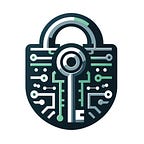What is Web3 and Why It Matters: An Introduction
Web3, often called the decentralized web, represents the next evolution of the internet. This paradigm shift promises to revolutionize online interactions, offering more privacy, security, and user control. But what exactly is Web3, and why should we care about it? In this first post of the “Mastering Web3 Security” series, we will explore the fundamental concepts of Web3 and its significance.
What is Web3?
Definition and Core Principles:
Web3 is a new internet iteration that leverages blockchain technology and decentralized protocols to create a more open and secure digital ecosystem. Unlike Web2, which is dominated by centralized entities and data silos, Web3 aims to decentralize control, giving power back to users.
- Decentralization: Unlike traditional web services controlled by centralized entities, Web3 relies on a network of nodes to ensure no single point of control. This means that applications and services are run across a distributed network, making them more resilient and less prone to censorship.
- Trustlessness: Through smart contracts and cryptographic algorithms, Web3 enables interactions without relying on trust in intermediaries. Transactions and agreements are executed automatically based on pre-defined rules encoded in smart contracts, reducing the need for third-party verification.
- Ownership: Users have control over their data and digital assets, facilitated by blockchain technology and decentralized identifiers. This shifts the paradigm from data owned by corporations to owned and controlled by the individuals who generate it.
Key Technologies in Web3:
- Blockchain: The foundational technology of Web3, ensuring data integrity and transparency. Blockchains are immutable ledgers that record transactions in a secure, transparent, and decentralized way.
- Smart Contracts: Self-executing contracts with the terms directly written into code, enabling automated and trustless transactions. For example, a smart contract on Ethereum can automatically transfer ownership of a digital asset once certain conditions are met.
- Decentralized Applications (dApps): Applications that run on decentralized networks, offering greater security and user control. dApps are not hosted on a single server but are distributed across many nodes, reducing the risk of downtime and improving security.
- Cryptographic Tokens: Digital assets representing value or utility within a blockchain ecosystem, enabling new economic models. These tokens can be used for various purposes, including governance, staking, and accessing services within a dApp.
Why Web3 Matters
Enhanced Security and Privacy:
Web3’s decentralized nature significantly reduces the risk of large-scale data breaches and cyber-attacks. With no central point of failure, user data is more secure. Additionally, cryptographic techniques ensure that user identities and transactions are protected. For example, decentralized storage solutions like IPFS (InterPlanetary File System) allow users to store and share data in a distributed manner, making it less vulnerable to hacking.
User Empowerment and Ownership:
In Web3, users own their data and digital assets rather than surrendering control to large corporations. This shift fosters a more equitable digital economy where users can directly benefit from their online activities. For instance, platforms like Filecoin incentivize users to share unused storage space, creating a decentralized marketplace for data storage.
Innovation and New Business Models:
Web3 introduces novel business models through token economies and decentralized finance (DeFi). These innovations open new opportunities for entrepreneurship and financial inclusion, particularly in underserved regions. DeFi platforms like Uniswap and Aave allow users to lend, borrow, and trade assets without intermediaries, providing financial services to anyone with an internet connection.
Interoperability and Open Standards:
Web3 promotes open standards and interoperability, allowing different platforms and applications to interact seamlessly. This connectivity breaks down silos and fosters a more collaborative internet. For example, the ERC-20 token standard allows different tokens to be easily exchanged and integrated into various dApps, enhancing liquidity and usability.
The Evolution from Web2 to Web3
Web1: The Static Web
The first internet generation, Web1, consisted of static web pages providing read-only content. Users could consume information but had limited interaction capabilities. Websites were primarily informational, and user-generated content was minimal.
Web2: The Interactive Web
Web2 introduced dynamic content, social media, and user-generated content. This iteration of the web-enabled more interaction and collaboration but came with increased centralization and data privacy concerns. Platforms like Facebook, Google, and YouTube thrived by collecting and monetizing user data, leading to privacy and data ownership concerns.
Web3: The Decentralized Web
Web3 aims to address the shortcomings of Web2 by decentralizing control, enhancing security, and giving users greater autonomy. This evolution represents a fundamental shift in how we interact with the internet, creating a more equitable and secure digital landscape. With Web3, users can interact directly with one another and with decentralized services without intermediaries, preserving privacy and control.
Conclusion
Web3 is poised to transform the digital world by decentralizing control, enhancing security, and empowering users. As we embark on this journey into the decentralized web, understanding the foundational concepts and significance of Web3 is crucial. Stay tuned for our next post, where we delve deeper into the evolution from Web2 to Web3, exploring this new paradigm’s key differences and transformative potential.
References
- https://ethereum.org/en/what-is-ethereum/
- https://a16z.com/wp-content/uploads/2021/10/The-web3-Readlng-List.pdf
- https://consensys.io/blog/what-is-web3-here-are-some-ways-to-explain-it-to-a-friend
- https://www.coindesk.com/learn/what-is-web-3-and-why-is-everyone-talking-about-it/
- https://eaglebtm.com/ethereum.html
- https://joeal.ca/blog/from-web2-to-web3-how-blockchain-technology-is-revolutionizing-the-internet/
- https://bitcoinnews.io/defis-impact-on-economy/
- https://neptunemutual.com/blog/chainlink-ccip-launch-what-you-need-to-know/
